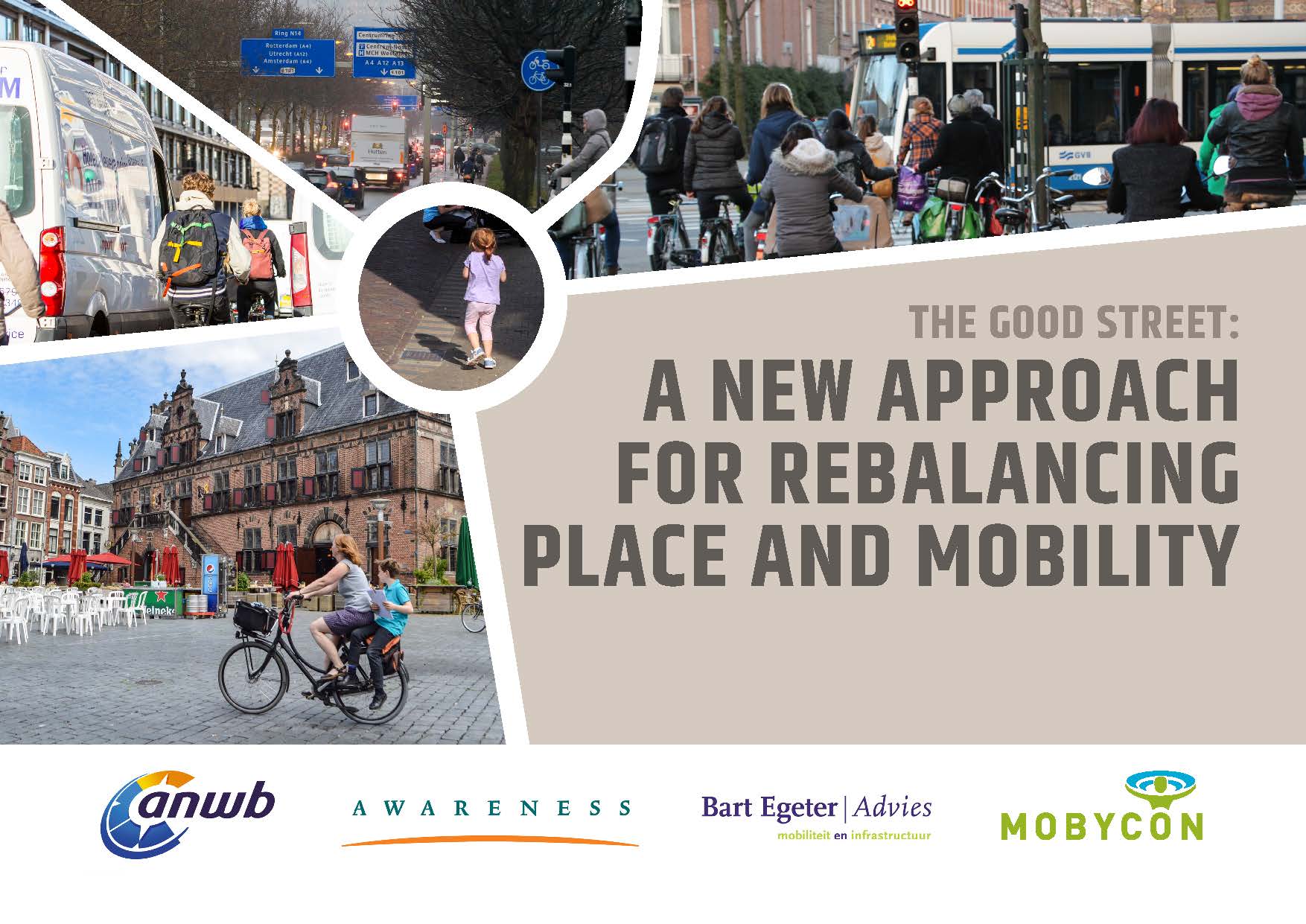Innovation / Mobility / Mobility management / Network planning / Public Spaces / Urban Mobility Design
The Good Street: A new approach for rebalancing place and mobility
In the past decades, there has been increasing friction between two fundamentally urban characteristics: Place and flow. While this might sound rather vague, this is an issue with which cities around the globe continue to struggle, and represent two basic elements that make up the existence of cities themselves.
More concretely, attractive and accessible spaces are needed for people to gather and make use of an inviting public realm. At the same time however, people flock to urban environments due to their efficient flow of both people and goods. This trend is only further complicated as the variety in size, weight, and speed of vehicles continues to grow.
In other words, as cities continue to grow in popularity and size, a friction between place and flow has developed. The more space we dedicate for high quality public spaces, the less efficient movement through the city becomes. The opposite has also shown to be problematic. The more space dedicated to flows through the city, the harder it becomes to create for high quality public spaces.
In partnership the ANWB (The Dutch Royal Touring Club), Awareness Advies, and Bart Egeter Advies, Mobycon has been busy developing a new approach to balancing mobility and place in urban space. Originally published in Dutch as Verkeer in de Stad, we’re proud to announce that the approach is now also available in English under the name, The Good Street: A new approach for rebalancing place and mobility.
The Good Street design approach provides a new way of thinking, with new foundations for design. At present, there is a tendency to focus on increasing flows, with spatial quality addressed as a separate problem. The Good Street, however, starts with its focus on place. That is, what qualities should a place provide? For instance, is this place somewhere for busy gatherings and bustling activity, or one of calmness and rest? Either way, a decision must be made about what kind of spatial qualities a place should provide. Only once this is determined can we begin to think about the type and location of mobility networks.
Meanwhile, the growing diversity of vehicles on the roads, both in size and speed, can result in dangerous situations for road users, especially the most vulnerable such as pedestrians and cyclists. The Good Street approach uses the basic principle of kinetic energy, which makes one thing clear: Speed kills. Though mass is also a factor, speed is something we choose. For this reason, we categorise vehicles based on their mass and achievable speed into vehicle families. These vehicle families are then further broken down in order to create functional networks for all vehicles. Since any vehicle will always have a mass and achievable speed, The Good Street remains flexible to accommodate new developments in mobility technologies.
At the end of the day, this method should not be understood as a copy-paste solution. Its potential lies in its flexibility and the variety of spaces it can help to design, as well as the potential for customization.
Our goal in sharing The Good Street method is to provide designers, engineers and policy makers the tools to find a better balance between place and flow in urban environments. As with all of work, Mobycon is always happy to lend a hand in helping apply these principles to your local context.
Learn about The Good Street with our experts
On Wednesday, November 11th, 2020 the first of three webinars, The Good Street Part 1: From past to present, the history of balancing place and mobility, aired on Mobycon Academy. Looking at the historical events that led to the development of Sustainable Safety, the Dutch equivalent of Vision Zero, and how those events have informed the collaborative creation of The Good Street, this webinar provided the introduction to be built on in the webinars to follow.
Here are the following two webinars: The Good Street Part 2: Balancing Place and Flow and The Good Street Part 3: Putting the approach into action .
 ">
">Stephen Kurz
‘Though we are strongly influenced by our environment, effective urban design can help us make sustainable, healthy, and safe choices. Not because we’re more aware of our choices, but because we’re not. Good urban design makes the ‘right’ choice easy. To achieve this, I value non-traditional approaches to exploring and developing solutions to urban issues.’



